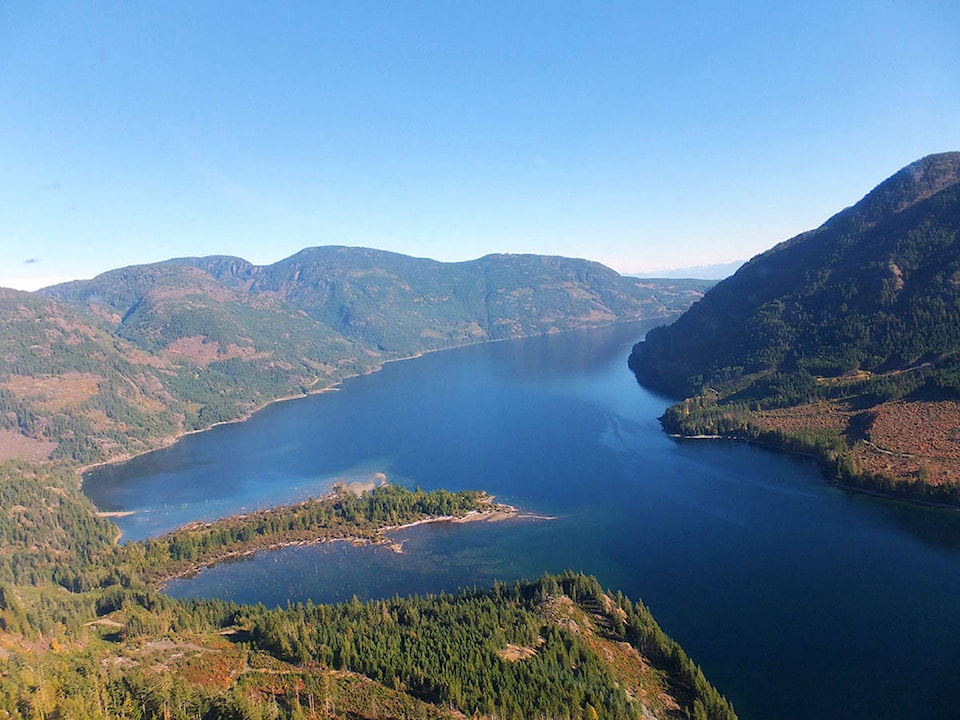The Comox Valley Regional District is anticipating a considerable increase in water usage over the next several decades, as the population of the Comox Valley continues to rise.
While per capita water consumption in the Comox Valley has gone down slightly in recent years, the flow rate projections for the CVRD’s $110 million water treatment project highlight that demand for clean water will continue going up in the distant future.
According to the Indicative Design Report for the water treatment project (prepared by Opus International Consultants in October 2017), the projected peak flow rate for the Comox Valley Water System will be 75 million litres per day (MLD) when the new water treatment plant is completed in the early-2020s. The volume is expected to meet peak demand for the new plant’s first 25 years of operation.
Read More: CVRD water treatment project receives green light
The same report states that the new plant is designed to have a maximum flow rate as high as 90 MLD in 50 years and 120 MLD in 100 years.
The projections mark a considerable increase in the amount of water currently consumed in the Comox Valley; between 2009 and 2015, the water treatment plant’s flow rate occasionally reached as high as 50–55 MLD in the summer months, but for most of the year, the flow rate was much lower — in the mid-teens to low 20 MLD.
The CVRD claims a projected 1.34 per cent population increase per year is the main reason behind the heightened demand for water in the Comox Valley.
“One of the first things we do is understand what capacity the infrastructure will require in order to meet a 20 or 25-year initial design horizon. We wouldn’t build infrastructure that wouldn’t be able to handle growth for 20-25 years,” said Kris LaRose, the CVRD’s senior manager of water and wastewater services.
“And we’d typically accommodate growth beyond that point to include design elements that allow for future expandability,” he added. “The initial capacity of that facility will be 75 MLD, and we expect that [amount] will meet the peak day demand that we will see in 25 years, and that’s entirely due to an increase in population.”
The potential for Cumberland and Royston to one day join the Comox Valley Water System was also mentioned in Opus’s report to justify budgeting for such a high peak flow rate.
Not everyone agrees with the CVRD’s plans for increased water usage.
Eduardo Uranga, a retired Cumberland-based engineer, has argued for months that the projected flow rates for the CVRD’s water treatment project are considerably higher than the amount of water actually consumed in the Comox Valley.
Uranga notes that according to Health Canada, the average water consumption in the Valley is 482 litres per person, per day.
He says multiply that figure by 49,000 — the expected number of people on the Comox Valley Water System — and you get 23,618,000 litres of treated water used per day.
“Even using the amount of water [we consume] today, we don’t account for the 75 million litres that these guys want the plant to [treat],” said Uranga. “The fact they want to put 75 million litres of water into the system when they only need 22 million is appalling.”
Uranga also believes the CVRD’s projections for water usage don’t align with the regional district’s own objectives surrounding water conservation.
“That’s a lot of water that we’re not supposed to be using because the [Official Community Plan] and the sustainability strategy call for a 50 per cent reduction in water usage per person, per day, by 2030,” he said.
LaRose responded that the system will be built to handle 75 MLD, but will not necessarily have to treat that volume of water every day.
Strain on wastewater facility
One question to consider is how the increased volume of water will impact the Comox Valley’s sewage facility in Area B, where water that goes down the drain will eventually end up before it’s treated and discharged into the Baynes Sound.
Previous reports suggest the Comox Valley Water Pollution Control Centre (CVWPCC) does not have the capacity to handle as much wastewater as the regional district is anticipating.
According to a capacity assessment from ISL Engineering, published in November 2016, the CVWPCC has a plant permit of just under 20 million litres of influent per day.
The facility’s effluent pumps were already acting at capacity in 2016.
“During periods of extreme rainfall, certain components of the CVWPCC are nearing or at capacity, and the plant does exceed its existing permitted peak daily volumetric discharge,” reads a statement from the CVRD.
To address its capacity issues, in November 2016, the CVRD’s sewage commission approved pursuing $69 million worth of upgrades over the next 50 years to its wastewater facility. Engineering design work for the first phase is already underway, which the CVRD claims will alleviate capacity concerns for the next 8-10 years.
“The analysis supporting sizing of these upgrades took into account the projected population growth, as well as other factors such as aging collection systems letting in more rain/groundwater, and climate change,” reads the CVRD’s statement.
As per the commission’s approval, additional tankage at the CVWPCC will be installed in 2025, as well as in the late 2030s and 2040s. Outfall will be replaced in the early 2030s.
